
Switzerland - FLP Ferrovia Lugano - Monte Tresa, Lugano - Ponte Tresa railway
For a full scale picture, please click on the picture shown !
The Lugano - Ponte Tresa railway, Ferrovia Lugano - Ponte Tresa is a metre gauge small railway in the Swiss
Italian speaking canton of Ticino. The line links the town of Lugano with Ponte Tresa, and it is 12,3 kilometres
long. The line was opened in 1912. It used to be a part of a longer network, including the Lugano–Tesserete railway
and the Lugano–Cadro–Dino railway, and the urban tramways of Lugano, none of which has survived to modern times.
The line is electrified with 1200 V DC. The operator on the line is the company Ferrovie Luganesi, owned by the
local authorities.
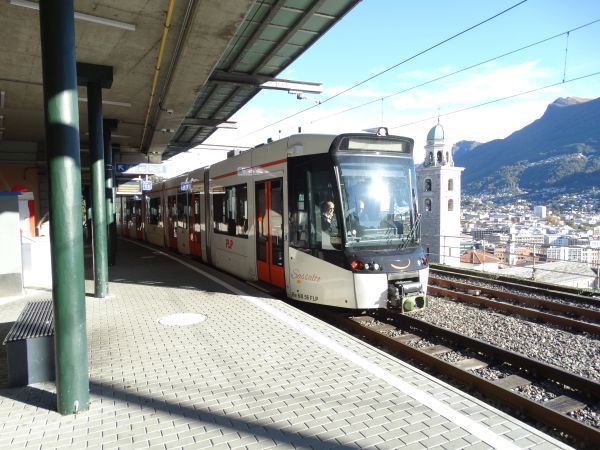
A lot has changed at the FLP. The end station of the line is no longer located by the lake, some one kilometer away from the city
center as it used to be, but now the line ends just opposite the SBB's Lugano station, high up on the hilltop. All the old trains
shown below have also been taken out of service and the whole line is now served by these Be 6/8 tram-trains built by Stadler.
When looking at them it's really hard to say should they be thought of as trams or as trains, but the tracks and signalling are
nevertheless typical trains systems. And there is a plan to open new lines, part of which would then run along the streets of the
city center just like any normal trams. These new tram-trains belong to the tram family Tramlink. They were originally developed
by Vossloh, but Stadler later bought the whole tram and train business of Vossloh. These new Tramlinks were taken in use in 2021.
Picture from Lugano station 4.11.2022 by Ilkka Siissalo.
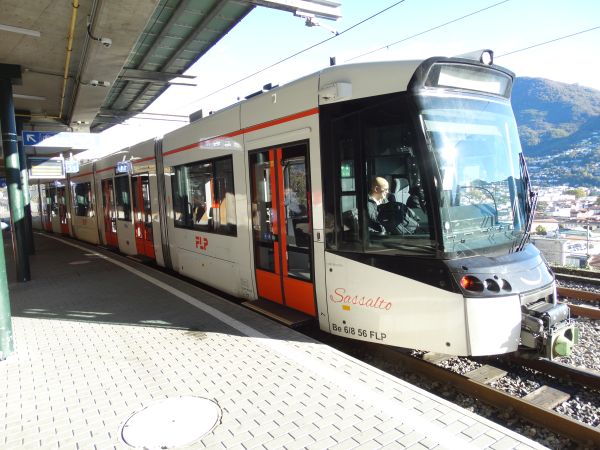
A closer look at the new Tramlink tram-train. FLP is planning to take also some of the old orange trains (nicknamed Mandarinlis)
again in use as well when there is a special need for more capacity during rush hours.
Picture from Lugano station 4.11.2022 by Ilkka Siissalo.
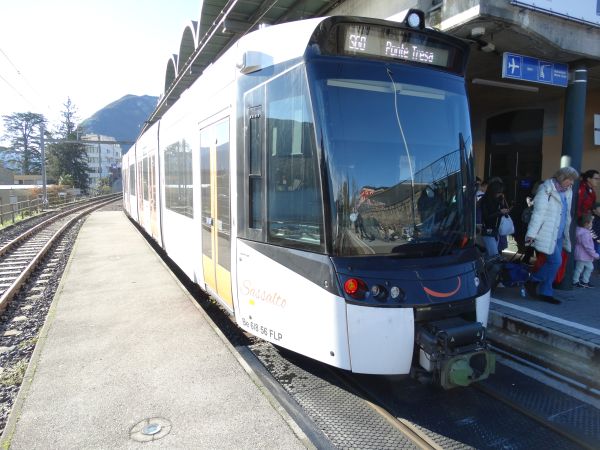
Both ends of the Tramlink wagons are identical with driver's cabs at both ends.
Picture from Lugano station 4.11.2022 by Ilkka Siissalo.
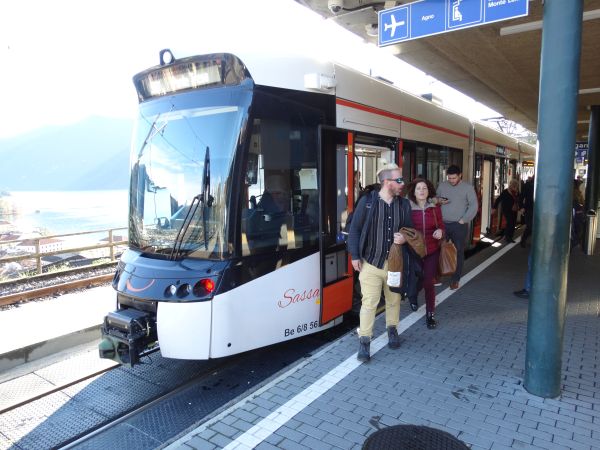
Many wide doors ensure that the passengers can rapidly get in and out of the tram-train.
Picture from Lugano station 4.11.2022 by Ilkka Siissalo.
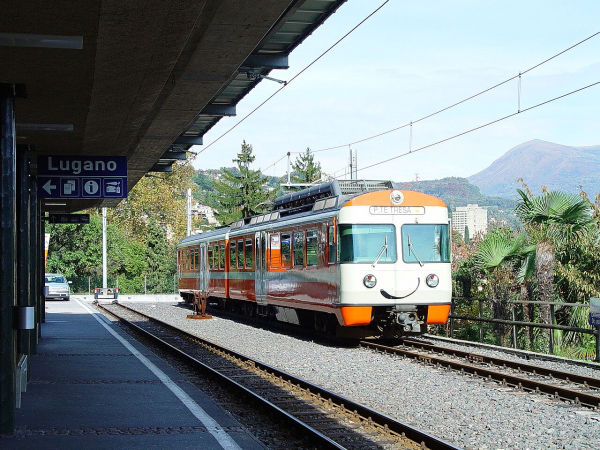
This used to be the typical trainset of the FLP Lugano - Ponte Tresa railway before the new tram-trains. These are Be 4/8 electric
multiple units, with one motorised wagon and one steering cab coach. They were built in 1978 and they are similar with what many
other Swiss narrow gauge train companies have used. However, a new Swiss law stipulates that every train,
tram or similar should be accessible to even those who use a wheelchair or are otherwise unable to climb stairs. To cope
with the new law, the operator company Ferrovie Luganesi ordered new low-floor middle coaches, which were taken in use since 2002.
Since then the trainsets have been classed as Be 4/12.
Picture of an original FLP two-coach trainset 20.10.2002 from Lugano by Ilkka Siissalo.
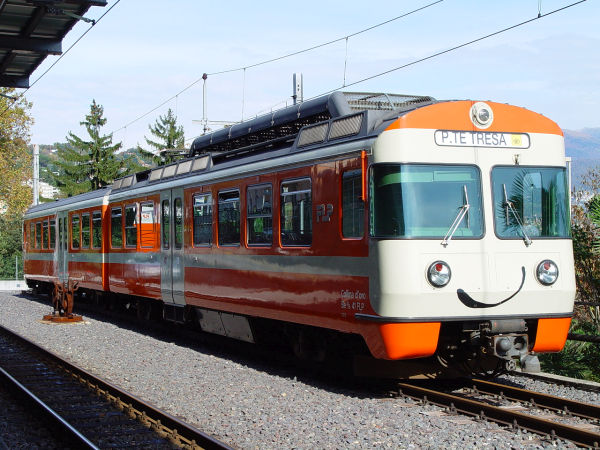
A closer look at the same two wagon trainset Be 4/8 no.41 from 1878.
Picture 20.10.2002 from Lugano by Ilkka Siissalo.
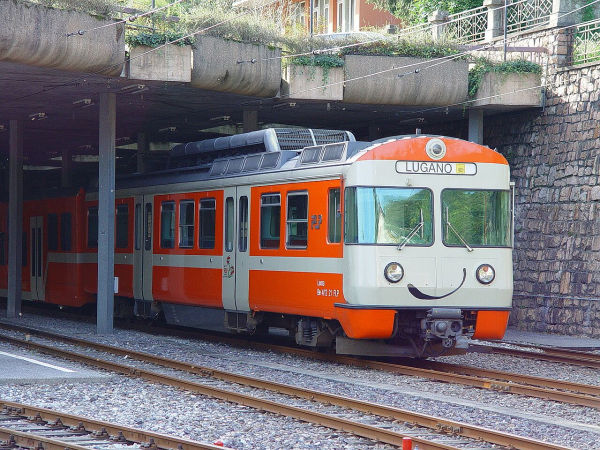
A similar trainset, but now with the brand new low-floor middle coach and therefore classed as Be 4/12 no.21.
Picture 19.10.2002 from Ponte Tresa by Ilkka Siissalo.
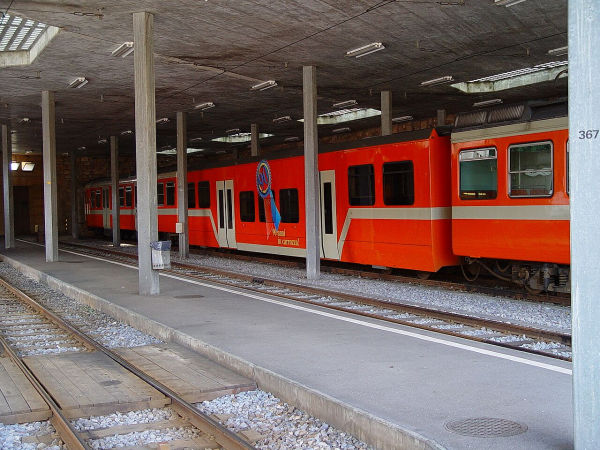
The new low-foor middle coaches are made by the company Stadler. Similar new wagons have also been delivered to a number of other
Swiss narrow gauge operators.
Picture 19.10.2002 from Ponte Tresa by Ilkka Siissalo.
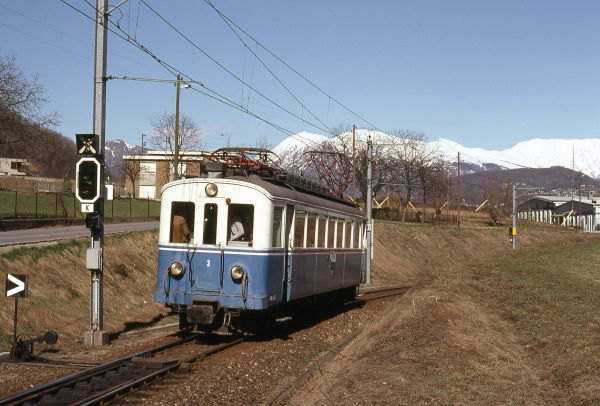
This motor wagon no.3 was one of the original motor wagons taken in use when the Lugano - Ponte Tresa railway was opened in 1912.
It was in daily use until 1978.
Picture from March 1978 by Flickr user "trams aux fils". Copied from Wikimedia Commons. The picture is copyrighted under the
Creative Commons Attribution 2.0 license (CC-BY 2.0).

